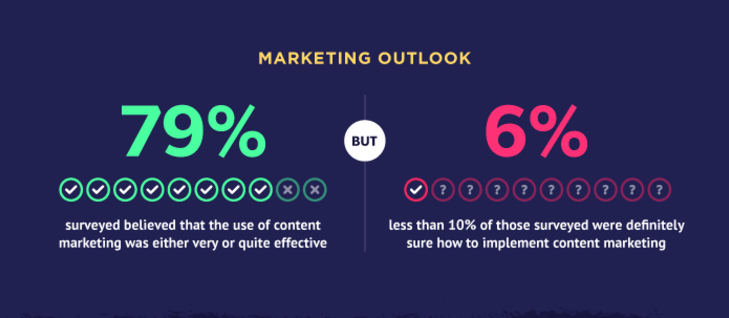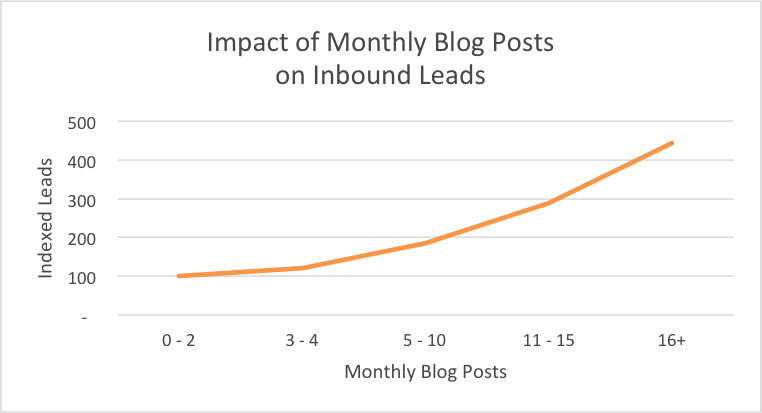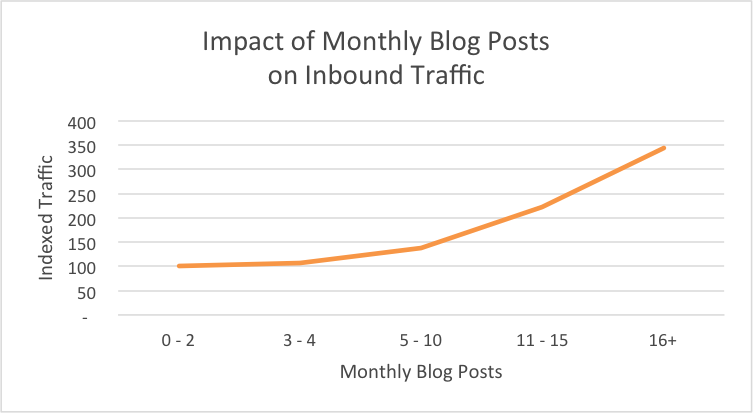How to Create an Editorial Calendar that Helps You Boost Content ROI

The editorial calendar is the foundation of any successful content marketing strategy. It is its blueprint.
However, it may be more complicated to create an editorial calendar that doesn’t suck and that helps you meet your marketing and business goals.
If your calendar is a simple spreadsheet with blog titles and dates to publish them and/or if you aren’t seeing the results you want from your content marketing efforts, this blog post is for you.
Let’s shed some light on what a content marketing editorial calendar is supposed to look like.
We’ll start with what an editorial calendar shouldn’t be and what drives us to keep on using bad calendars.
Top Reasons Why Your Editorial Calendar Sucks (and What to Do about It)
79% of marketers know content marketing is effective. But only 6% of them are definitely sure how to implement it.
 Image via HubSpot
Image via HubSpot
That’s a pretty big difference, right?
In my experience, this difference can be partly explained by content marketers “winging it”. This means creating content on the fly, with no clear plan.
Constantly pressed for time, your typical marketer is often found saying:
“Sh*t, I’ve still got that blog post to write this week. What on Earth should I write about?”
This type of attitude is obviously wrong. However, it’s rarely the marketer’s fault. More often than not, it’s an organizational problem. Understaffed companies that aren’t outsourcing writing for various reasons usually wing their content marketing.
But that’s a long debate and this is not its place.
Suffice it to say that one of the reasons why your editorial calendar sucks is that you don’t have enough time to create a proper one.
If you’re uncertain of your goals as a marketer or content writer, your calendar will suck. Knowing exactly where you’re supposed to arrive makes for a purposeful journey, doesn’t it?
(Yes, I know, sometimes it’s about the journey, not the destination. But this is rarely the case in marketing.)
Lastly, if you find that your content calendar brings you more pain than results (and you’ve been in this situation for a while), it’s because you’re afraid of change.
Before you cast that stone, let me say that this is an inherent human flaw. We all love the comfort of what we know. The unknown is what’s scary.
So if your editorial calendar is “OK-ish”, why bother changing it?
Well, because it needs to be more than this if you expect ROI from your content.
But I’m sure you already know that. That’s why you’re here, after all.
I’m not going to say it’s easy to create the perfect editorial calendar. We already established that change is hard.
What I will say is that it’s worth it.
Let’s take a look at the process.
The Marketer’s Guide to an Editorial Calendar for Content that Rocks
First of all, using HubSpot’s Blog Ideas Generator and adding some of the results in a spreadsheet doesn’t mean you created a content calendar.
An editorial calendar has a purpose. It has to back up your entire marketing strategy and, of course, your business strategy.
Before you even open that spreadsheet, establish the following:
-
Buyer persona
Whom are you writing for?
Don’t give a generic answer like “our (potential) customers”. Also, don’t shrug it off assuming that everybody already knows this.
It’s always a good idea to go through the basics every once in a while.
Plus, if you outsource writing or get a new team member, it’s helpful to have a detailed buyer persona as part of your editorial calendar. Even for your team’s seniors, it helps to be able to refer back to this cornerstone research.
It may not feel like it, but it’s very easy to lose track of what you set out to do. Knowing and being reminded of whom you are writing for is never a waste of time.
You can find a step-by-step guide on building your buyer persona here.
-
Team
Who’s going to be in charge of what? Writing, graphic design, publishing, promoting – all these have to be established before you put your virtual pen to your virtual paper.
Want to wing this as you go?
Sure, it can be done. But you will run the risk of having too much content that just sits there gathering virtual dust because there’s no one to edit, publish or promote.
Make sure that your team (whether it’s in-house or outsourced) can handle the amount of content you are planning for.
Speaking of which…
-
How Much Content Will You Be Producing?
HubSpot says that you should be writing more than 16 blog posts per month to get better traffic and more leads.
 Images via HubSpot
Images via HubSpot
Does this scare you?
Don’t worry; you don’t have to write more than you can. If you’re a regular on the Idunn blog, you already know that, while I advocate investing in content marketing, I also advocate knowing your limits.
In other words: instead of writing 20 half-assed blog posts, write seven really good ones. Authority content is not about killing yourself over the keyboard. It’s about writing when you have something to say and when you can take the time to say it properly.
Make sure that your editorial calendar reflects this. Write down how often you will be producing and publishing new content. And do stick that schedule.
-
What Types of Content Are You Going to Publish?
Weigh this one carefully. Go back to your buyer persona and find out what they respond best to. Then take another look at your team’s availability. How much time (and money) can you invest in content creation?
You’ve got plenty of choices:
- Blog posts
- Webinars
- White papers
- E-books
- Infographics
- Topic clusters
- Videos
Did I miss anything?
Probably.
But the point is that you have to keep in mind that a white paper takes longer to produce than a blog post. And it involves team members with different skills.
The same goes for topics clusters versus videos. Or podcasts versus webinars.
Be realistic about what you can achieve. Creating an editorial calendar that has you and your team stretched too thin won’t bring you anything good. It will only bring you average (at most) content.
And now for the more practical aspects:
What Should Your Editorial Calendar Contain?
In other words: how should you best organize your spreadsheet or Google sheet?
I like to keep things simple, so my editorial calendar has the following fields:
- Proposed title of the content piece (subject to change)
- Short description (no more than 1-2 phrases explaining why the topic matters to the audience and how it will be tackled)
- Main keyword (also subject to change; I always advise re-doing the keyword research right before you start writing, as things move fast in the SEO world)
- Call-to-action (can be changed later, but should be in the calendar to tie the purpose of each piece with business and marketing goals)
- Status (published, written, started, not published)
- Assigned to (who is responsible for producing it)
- Promotion (how we will help the piece along its internet journey).
A few things that should be emphasized in your editorial calendar:
- Special promotions: content created specifically for launches, new e-books, special deals and coupons
- Holidays: content created specifically for Christmas, Labour Day, Valentine’s Day, Halloween and so on
- Guest posts: whether an author is guest posting on your blog or you are guest posting on someone else’s blog, make sure you mark those dates clearly in your editorial calendar. You shouldn’t miss them!
Conclusions and Recommendations
I encourage you to keep things as simple as possible. Don’t crowd your editorial calendar with useless information. Only write down what you and your team absolutely need to know to produce the best content ever.
More importantly, make sure you have a head start on your content. You shouldn’t start to frantically type in a blog post the same day it’s due to be published.
At Idunn, we like to make sure we have at least one month’s worth of content in advance. Unplanned opportunities for guest posting can always come up and mess up your plans. The same goes for industry news that you have to cover that very day so your content is still relevant.
Lastly, don’t panic if your editorial calendar isn’t full for a year in advance. As you type in new titles, you’ll be surprised at how many ideas can pop into your head.
Need help with an editorial calendar that pads up your bottom line? Or with getting the content on your existing calendar written? We can help with both! Drop us a line and we’ll get back to you ASAP.



4 Comentarii la “How to Create an Editorial Calendar that Helps You Boost Content ROI”
[…] an editorial calendar and begin producing new content […]
[…] and what you need to be writing about. Map out your course of. A well-thought and well-implemented editorial calendar can prevent a ton of time and money. To not point out producing one more ton of […]
[…] and what you should be writing about. Map out your process. A well-thought and well-implemented editorial calendar can save you a ton of money and time. Not to mention generating yet another ton of […]
[…] and what you should be writing about. Map out your process. A well-thought and well-implemented editorial calendar can save you a ton of money and time. Not to mention generating yet another ton of […]